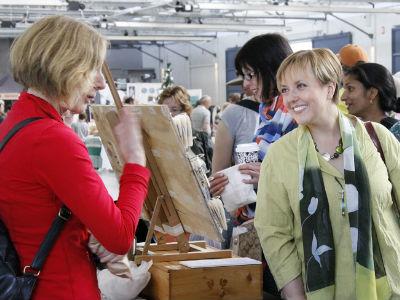Tasmania’s cultural renaissance has become a hot topic of conversation recently, but our state has long been a hive for creative activity.
Throughout history our unique natural environment, wide open spaces and geographic isolation have inspired creativity, from the first Aboriginal inhabitants to colonial landscape artists and contemporary choreographers and directors.
While Tasmania has always had a creative undercurrent, recent acknowledgements from TripAdvisor and Lonely Planet and developments like David Walsh’s Museum of Old and New Art (MONA) have officially put Tasmania on the international radar.
Along with the Festival Of Music and Art, MONA has been a major catalyst for a new wave of cultural tourism that has seen visitors from around the world coming to Tasmania and discovering what we have to offer.
But it is important to acknowledge that the accolades Tasmania now enjoys are the fruits of the labour of many passionate and dedicated people from across the artistic community.
We have enabled our arts and cultural sector to thrive by supporting arts industries and helping to raise the profile of arts experiences around the state, and along the way we have created several gems that have caught the attention of other state arts funding agencies and national and international organisations.
At the grassroots, Tasmania’s industry development programs support innovation and collaboration.
Our ARTBIKES bike borrowing service encourages people to explore Hobart’s galleries and cultural hot spots, and has inspired the South Australian government to create a similar project. Our COLLECT Art Purchase Scheme supports local artists and galleries by providing interest-free loans to purchase or commission artworks by Tasmanian artists, which has provided vital activity to art galleries in a time of economic downturn. We recognise that quality arts experiences can be found right across our state in unexpected places such as artists’ workshops, community cultural festivals and small museums, so we help to connect people to the arts in all its forms through our smARTmap Tasmania online portal.
We also support a range of events that help to strengthen the arts and cultural sector and provide opportunities for local practitioners to showcase their work and collaborate with high profile visiting international artists. Long-standing events such as Ten Days on the Island, the Festival of Voices, Junction Arts Festival, and Breath of Fresh Air Film Festival are this year joined by two exciting new cultural events – Hobart Baroque, Australia’s only festival dedicated to early music, and Dark MOFO, which will centre on a major winter exhibition at MONA. These events contribute to the vibrancy of our local communities, support our arts industries and entice visitors to our shores to join in the experience.
Of course, we are also extremely lucky to have a great deal of generosity amongst our arts supporters.
MONA is a fantastic supporter of Tasmanian artists and performers with work by several Tasmanian artists featured in its collection, and many Tasmanians showcased at MOFO, a truly original and inspirational music and art festival that has revolutionised Tasmania’s summer landscape. MONA’s collaboration with the Tasmanian Museum and Art Gallery on the Theatre of the World exhibition, curated by Jean Hubert Martin is also helping showcase Tasmania’s State Collection which features 300 objects from Tasmania’s State Collection to a broader audience.
Detached Cultural Organisation is another major supporter of the arts in Tasmania, and in partnership with the Tasmanian Museum and Art Gallery (TMAG) has brought a series of major contemporary art exhibitions to Hobart over the last 5 years, and continues to support TMAG to make contemporary art more accessible to the entire Tasmanian community.
We also invest in our cultural infrastructure to make the most of the fantastic cultural assets we have here.
We are looking forward in the next few weeks to the reopening of the Tasmanian Museum and Art Gallery after a $30 million redevelopment which will see the museum open 12 new exhibitions centred on the stories of Tasmania’s State Collection, and become a hub for major cultural events in Hobart.
In another major investment, the University of Tasmania, in partnership with the Tasmanian and Australian Governments, recently announced the creation of a new Academy of Creative Industries and Performing Arts adjacent to Hobart’s historic Theatre Royal. This will create a new performing arts venue, improve facilities at the Theatre Royal, and anchor the state’s creative industries with an educational and training hub that supports the development of artistic talent alongside innovative technologies offered by the National Broadband Network.
Importantly, much of the strength of our creative sector comes from the support of the local community. A recent Australian Bureau of Statistics report noted that, per capita, more Tasmanians attend theatre performances than other Australians, we also visit more art galleries than those in other states and Tasmanians far exceed the Australian average for visiting museums.
We have a lot going in our small state with a bold and brave cultural industry, striking natural beauty and clean air, great food and wine, friendly locals and with a raft of great festivals and events on the calendar there are even more reasons to plan a visit soon.
Further information about the programs mentioned in this article is available from Arts Tasmania, Events Tasmania and the Tasmanian Museum and Art Gallery, which can be accessed via the Tasmanian Government.





